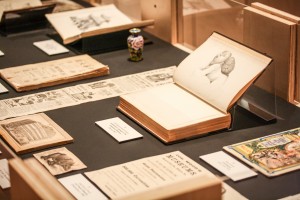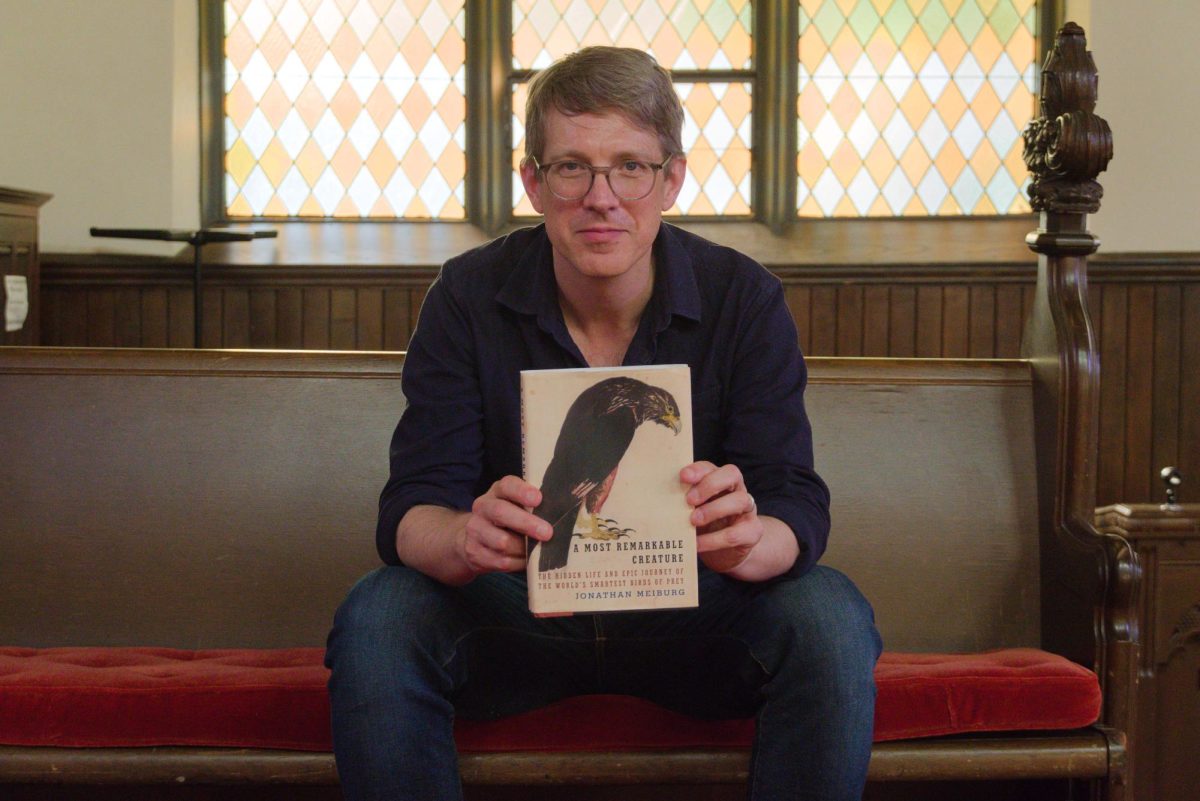On Thursday, Oct. 3, Faulconer Gallery opened a new exhibition, “From Wunderkammer to the Modern Museum, 1606-1884.”
A “Wunderkammer” is a German word to refer to a room of wonder, filled with natural or artificial items known for their beauty, rarity or scholarly importance.
Ninety-three rare books, catalogs and prints—some more than 400 years old—will be on display, documenting the stories of these cabinets of curiosities. According to a statement released by the Faulconer Gallery, this exhibition “documents the fascinating intersection of science and art in these spaces, tracing the shift from private rooms of wonder (or ‘Wunderkammers’) to public institutions.”
These 93 items from the 17th to 19th centuries were drawn from the private collection of Florence Fearrington, a former Board of Trustees member for Grinnell College, and carefully selected by Lesley Wright, the director of the Faulconer Gallery.
Grinnell was chosen to exhibit these works after Trustee Dr. M. Anne Spence ’66 first suggested Grinnell display Fearrington’s collection. Dr. Spence had seen an exhibition about Wunderkammers showcased at the Houghton Library of Harvard University two years ago and brought it to the attention of President Kington.
“President Kington and Dr. Spence came back and asked if I might consider exhibiting these materials at Faulconer Gallery. I was personally interested because I teach a class on museum studies and we spent time looking at this material,” Wright said.
The books on display in Faulconer Gallery are only a small part of Fearrington’s collection. She had previously lent out books documenting Wunderkammers in the Harvard exhibition and in the New York Grolier Club’s exhibition just last year.
“My husband and I originally began collecting these books about Wunderkammers because we were interested in their documentation of sea shells, but over time we just continued to collect them and have been for over 20 years,” Fearrington said.
The books on display will illustrate how diverse the collections in these Wunderkammers were. Several classes, ranging from biology to philosophy, already have plans to use this exhibition as part of their coursework this semester.
“Anything that could elicit wonder was included in these Wunderkammers, because wonder at the time was thought as a cognitive emotion. If you felt wonder, that would have inspired you to learn. Anything that could inspire wonder was mixed together in these spaces,” Wright said.
These rooms, which originated in the private collections of 16th century Europeans, were the origins of our modern museums and galleries.
“These cabinets of curiosities came about because all the explorers were bringing these amazing things back from the ‘New World.’ People didn’t know what to do with them or how to interpret them. So, these objects were placed for observation in these Wunderkammers; science-bent and curiosity-bent individuals eventually began comparing collections to further our scientific knowledge,” Wright said.
The books that will be on display were written by priests and scholars, who meticulously documented the objects in 17th to 19th century Wunderkammers. Through the exhibition, visitors can follow the history of Wunderkammers and see the evolution of how private Wunderkammer collections became public modern museums.
“As we get into the 18th century, cabinets of curiosities became more and more specialized, and turned into what we now know as museums,” Wright said.
Wright believes that Grinnell’s student body will appreciate the study of Wunderkammers and their connections to contemporary museology. Wunderkammers reflected the quest for knowledge of scholars alive centuries ago, and Grinnell’s exhibition is designed to inspire a similar quest in the student body.
“I hope people will think about coming in often,” Wright said. “Some of the books on display are very specialized. I hope students might come in one day to look at one case, enjoy it, but then leave and come back the next day to observe a second case.”



















































